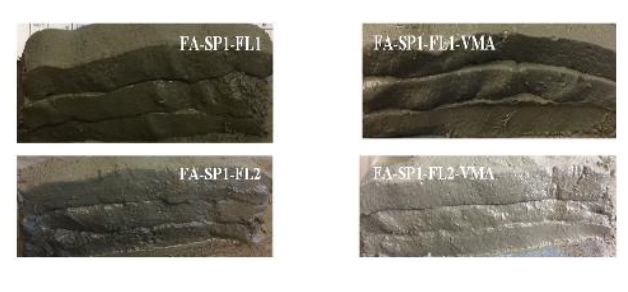Researchers from France and the UK are delving into 3D printing in construction and experimenting with parameters in materials. Releasing their findings in ‘Rheological properties of 3D printing concrete containing sisal fibres,’ the authors explain positive and negative effects as they studied impacts on cement.
Formworks are a major factor in the cost of concrete construction today, so the benefits intrinsic to 3D printing such as greater affordability overall, rapid speed, customization, and more make the technology enticing to industrial users. Currently, the most popular methods used are D-shape or binder jetting, and concrete printing via extrusion. For this study, the researchers used fly ash and limestone powder as a binder with Portland cement, and investigated the following for impacts on the printable mortar:
- Fly ash
- Limestone powder (LS)
- Percentage of natural sisal fibers (NF)
- Dosage of superplasticizer (SP)
- Viscosity modifying admixture
“The rheological parameters were evaluated by the static yield stress using the cylindrical slump test,” explained the researchers.
Reminding us that any type of work with cement is ‘strongly time-dependent,’ the authors point out that timing must be consistent in experimentation with all sample compositions or comparisons would be void. Dry materials, binders, and water were mixed in a blender, and then both natural fibers and VMA were added. Afterward, the mortar was evaluated for rheological characterization.
As two different types of mortar were evaluated (one with 100 percent binder and the other made of 24% of FA of replacement of cement), the researchers noted a reduction in the flow table spread with FA, but only slightly so—and it also had an impact on the ‘estimated yield stress similarly as the slump flow.’ With extrusion, the LS mix did not hold up in sustaining the layers. Previous research has also shown that the use of LS has been the possible cause of ‘segregation’ in cement past.
“Consequently, it has been demonstrated that binder only made with cement and limestone powder was not suitable to be applied in 3D printing processes with mortar,” said the researchers.
The addition of increased SP reduced the estimated yield stress substantially, influencing ‘workability, consistency, and printability.’ In adding VMA, the team noted a reduction in the following: flow table spread, penetration, increase in estimated yield stress. These types of mixes offer better viscosity, along with stable layer adhesion.
“The addition of sisal fibers (NF) from 0.6 to 1% of binder, reduced the flow of the mortar by improving its cohesiveness with a denser network of fibers. Indeed, with the addition of higher amounts of NF, the yield stress increased, and the fresh properties decreased,” concluded the researchers.
“Appropriate workability, good segregation and bleeding resistance, easy extrudability and great printability and buildability were required in order to apply 3D printing processes to cement-based materials. Indeed, extruded layers must maintain it-self and might not deform under supplementary layers’ load. It also means that layers must bond together to avoid voids, cold joints and other weakening issues.”
3D printing with cement and use of such techniques and materials in construction has resulted in many studies as well as dynamic projects over the past few years especially, from investigating different binders with low conductivity to the use of 3D printed concrete foam panels, self-healing materials, and so much more.
What do you think of this news? Let us know your thoughts! Join the discussion of this and other 3D printing topics at 3DPrintBoard.com.
[Source / Images: ‘Rheological properties of 3D printing concrete containing sisal fibres’]Subscribe to Our Email Newsletter
Stay up-to-date on all the latest news from the 3D printing industry and receive information and offers from third party vendors.
You May Also Like
HILOS Launches Studio OS for AI-Driven 3D Printed Shoe Design
At Milan Design Week, footwear 3D printing startup HILOS has unveiled its latest development, Studio OS. Introduced at the historical Villa Bagatti Valsecchi, the platform is meant to redefine how...
3D Printing Webinar and Event Roundup: April 28, 2024
In this week’s 3D Printing Webinar and Event Roundup, the Ceramics Expo is taking place in Michigan, Stratasys continues its advanced training courses, and SPE is holding a Polymer Characterization...
Initial Speakers and Sponsors Announced for Additive Manufacturing Strategies 2025
Nearly a year away from the event, the Additive Manufacturing Strategies (AMS) 2025 conference is already beginning to take shape. Building upon the success of 2024’s summit, AMS has established...
HP & INDO-MIM Collaborate to Boost Metal 3D Printing in India
HP Inc. and INDO-MIM, a US- and India-based supplier of metal injection molding (MIM) powders and contract manufacturer, have announced that the two companies will collaborate to accelerate additive manufacturing...




































